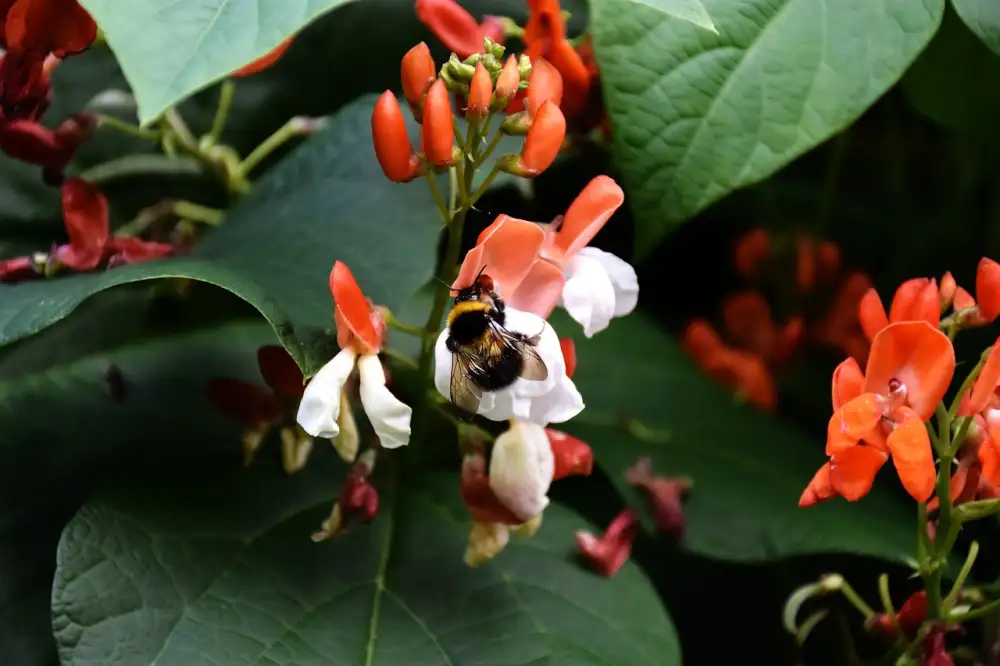Grow Your Own Bounty: A Guide to Runner Beans for Your Home Garden

Runner beans, also known as pole beans or climbing beans, are a popular vegetable in home gardens due to their ease of cultivation and delicious taste. These vibrant green pods are a member of the legume family and are packed with nutrients that make them a valuable addition to any diet. With their ability to climb and grow vertically, runner beans are not only practical for small spaces but also add visual interest to your garden with their colorful flowers and lush foliage. Whether you're a seasoned gardener or just starting out, growing runner beans can be a rewarding experience that yields a bountiful harvest throughout the growing season.
Health Benefits of Consuming Runner Beans
Runner beans are not only delicious but also packed with health benefits. They are low in calories and high in fiber, making them a great addition to a balanced diet. Consuming runner beans can help regulate blood sugar levels due to their low glycemic index. They are also rich in vitamins such as vitamin C, K, and B6, as well as minerals like iron and manganese. Additionally, the antioxidants present in runner beans can help reduce inflammation in the body and support overall immune function.
Nutritional Value of Runner Beans
Runner beans are a nutritional powerhouse, packed with essential vitamins and minerals. They are rich in fiber, which aids digestion and helps maintain a healthy gut. A single serving of runner beans provides a significant amount of vitamin K, important for bone health and blood clotting. They are also a good source of vitamin C, an antioxidant that boosts the immune system and promotes healthy skin. Additionally, runner beans contain folate, which is crucial for cell growth and development. With low calories and high nutrient content, incorporating runner beans into your diet can contribute to overall health and well-being.
How to Grow Runner Beans at Home
To grow runner beans at home, start by selecting a sunny spot with well-drained soil. Plant the seeds directly into the ground after the last frost date, or begin them indoors 2-4 weeks earlier. Sow the seeds 1-2 inches deep and 3 inches apart in rows or in a teepee structure for support as they grow. Water regularly, keeping the soil consistently moist but not waterlogged. Mulch around the plants to retain moisture and suppress weeds. As they grow, provide support with stakes or trellises to help them climb. Harvest the beans when they are young and tender for best flavor. Runner beans are easy to grow and can be a rewarding addition to your home garden.
Cooking Tips and Recipes Using Runner Beans
Runner beans are versatile and can be enjoyed in a variety of ways. To prepare runner beans, start by trimming the ends and removing any tough strings along the sides. They can be steamed, boiled, stir-fried, or even grilled for a delicious smoky flavor. One popular recipe is a simple sauté with garlic and olive oil, finished off with a sprinkle of Parmesan cheese.
For a refreshing summer salad, blanch runner beans and toss them with cherry tomatoes, feta cheese, and a balsamic vinaigrette. You can also incorporate runner beans into pasta dishes by adding them to a creamy Alfredo sauce or mixing them with pesto and pine nuts for a flavorful twist.
When cooking runner beans, it's important not to overcook them to maintain their crisp texture and vibrant color. Experiment with different seasonings like lemon zest, fresh herbs, or chili flakes to enhance their natural flavors. Whether as a side dish or the star of a main course, runner beans add a nutritious and tasty element to any meal.
Sustainability and Environmental Impact of Runner Beans
Runner beans are not only a nutritious addition to your diet but also a sustainable choice for home gardening. These legumes have the ability to fix nitrogen in the soil, reducing the need for synthetic fertilizers. They also have a deep root system that helps improve soil structure and prevent erosion. Additionally, runner beans are known for their high yield per plant, making them an efficient use of garden space. By growing your own runner beans, you can reduce your carbon footprint by avoiding transportation emissions associated with store-bought produce. Overall, incorporating runner beans into your home garden can contribute to a more sustainable and environmentally friendly food system.
In conclusion, incorporating runner beans into your home cooking routine can bring a plethora of benefits. Not only are they packed with essential nutrients and health-promoting properties, but they are also easy to grow in your own garden. By cultivating runner beans at home, you can enjoy the satisfaction of harvesting fresh produce and reducing your carbon footprint. Their versatility in various dishes makes them a versatile and sustainable addition to any meal. So why not elevate your culinary experience by embracing the goodness of runner beans today?
Published: 18. 04. 2024
Category: Home



